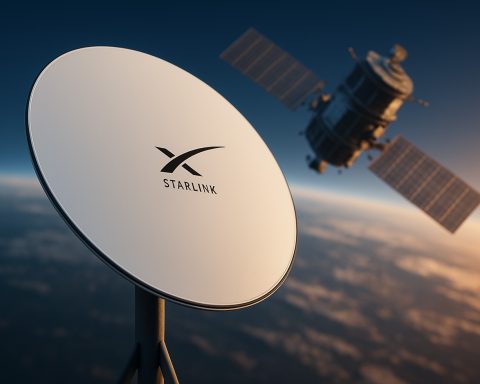- Pi Network experienced a sharp 50% drop in token value, stirring widespread concern within its crypto community.
- Controversy centers on a 12 million PI token transfer linked to insiders, igniting debates over potential insider selling versus routine balance migration.
- Amid market turmoil, dissatisfaction grew as Pi Network’s highly anticipated mainnet launch was delayed, and the company instead announced a $100 million ecosystem fund.
- The situation highlights the critical importance of transparency and communication for any Web3 or decentralized project.
- Trust remains fragile in the crypto space; robust public accountability and clear on-chain evidence are essential to maintaining community confidence.
Red banners flash across crypto forums. Prices tumble. Holders, stung by a shocking 50% drop in Pi Network’s token value, flock to digital town squares with a single urgent demand: answers.
Crypto winters can be unforgiving, but the past week has pushed Pi Network’s loyal community to the edge. Whispers about the project reached a fever pitch when eagle-eyed users discovered a clandestine transfer: 12 million PI tokens—at the height of market optimism—vanished from a single wallet. Blockchain sleuths quickly linked the mystery wallet to project insiders. The air thickened with accusations: Was Pi Network’s promise, born in the glow of consensus and community, quietly betrayed by its own architects?
The charge is simple yet seismic. Some claim core team members offloaded tokens just as prices spiked, reaping windfall profits while everyday miners reveled in project milestones and talked of future riches. Others, pointing to raw on-chain evidence, insist the transaction was nothing more insidious than a routine migration: moving user balances, not siphoning funds. Amid the digital crossfire, trust—the rarest currency in crypto—hangs in the balance.
The backdrop to this drama couldn’t be more telling. At the prestigious Consensus 2025 conference, Pi Network’s founders courted excitement about their ecosystem. Developers awaited a long-promised mainnet launch, hoping to unleash a wave of decentralized apps. Instead, the company unveiled a $100 million ecosystem fund—impressive, sure, but far shy of the revolutionary transformation many had anticipated. Disappointment among some pioneers quickly morphed into panic, fueling an exodus and lighting a fuse under already volatile prices.
But is this merely a speed bump or the start of something more sinister? Doubters recall the countless rug pulls and failed promises littering crypto’s short, brutal history. Yet defenders cite Pi’s efforts to refine its technology: the decommissioning of its central node, a key leap toward decentralization, and ambitious plans to integrate artificial intelligence for future dApps and decentralized identity solutions.
The real story may not be as clear as the blockchain itself. What’s certain is this: transparency matters. For any Web3 project, especially one drawing millions of hopeful users and billions in notional value, communication and public accountability form the lifeblood of progress. When transparency wanes, suspicion explodes. In the end, Pi Network’s ongoing saga is less about single wallet transfers and more about the messy, global pursuit of trust in an unregulated frontier.
The takeaway? No project—however visionary—can outrun fundamental questions of integrity. Investors and builders alike should remember: in crypto, sunlight isn’t just the best disinfectant. Sometimes, it’s the only one.
Shocking Pi Network Crash: The Untold Truth Behind the Token Meltdown and What You Must Do Now
# Pi Network’s 50% Token Crash: Unpacking the Fallout, Facts, and Future
Pi Network’s recent 50% token price plunge has sent shockwaves throughout the crypto community. As millions grapple with confusion and accusations following a massive 12 million PI token transfer, it’s crucial to separate speculation from fact, evaluate the project’s real status, and draw actionable insights for both current and prospective investors.
—
Breaking Down the Incident: What Really Happened?
Key Facts:
– 12 Million PI Tokens Moved: Blockchain analysis tools such as Etherscan and BscScan (depending on where PI trades OTC) confirm a contentious movement of tokens from a wallet connected to Pi Network insiders at a high market point.
– Community vs. Insider Claims: While many suspect profit-taking by insiders (sometimes referred to as a soft rug pull), Pi Network’s core team has claimed this was a routine migration, not a sell-off.
– On-Chain Ambiguity: Without full transparency, it’s difficult for third parties to conclusively determine the transaction’s nature, fueling uncertainty and mistrust.
What the Blockchain Shows:
– Analytics from Dune Analytics and similar platforms highlight a sharp outflow of PI from a single address, which coincided with the token’s dramatic price correction.
– Insiders say this aligns with user account updates as part of scaling up wallets, a plausible explanation but one requiring more third-party validation (source: [Cointelegraph](https://cointelegraph.com)).
—
Pi Network in 2024: Features, Fundamentals, and Friction
Features & Specs
– Mining Model: Users ‘mine’ PI using mobile apps, unlike electricity-intensive PoW approaches.
– Ecosystem Fund: Recently announced $100 million fund to spur dApp development—significantly less than competing projects like Solana or Polygon have earmarked for ecosystem growth.
– Decentralization Efforts: Recent decommissioning of a central node and plans for a community-run network.
– AI Integration: The road map promises AI-powered tools for dApp and ID solutions.
Pricing & Tokenomics
– Open Mainnet Still Pending: PI is not officially listed on major exchanges due to ongoing KYC/user verification and compliance work.
– OTC Trading: Most PI tokens trade OTC on decentralized platforms—often at significant risk premiums due to illiquidity and project uncertainty.
– Token Release Schedule: There’s still little clarity on how many tokens will be released when, raising dilution worries (source: [CoinGecko](https://coingecko.com)).
—
Current Industry Trends & How Pi Network Compares
– Decentralized Identity (DID): The proposed DID solution aligns Pi Network with emerging blockchain identity trends seen in projects like Polygon ID and Civic.
– VC Funding Slowdown: Fundraising and ecosystem grant announcements echo broader market caution during the ongoing “crypto winter,” as noted in [Messari’s 2024 State of Crypto](https://messari.io).
—
Controversies & Limitations
Known Issues
– Delayed Mainnet Launch: Repeated setbacks on mainnet and token rollouts frustrate users.
– Opaque Communication: Many users complain of ambiguous updates and evasive answers from project leaders—even when pressed on major events like the recent token movement.
– No Exchange Listing: Since PI isn’t traded on major exchanges, actual liquidity is poor, and prices on OTC are highly volatile and risky, as reported in [CryptoSlate](https://cryptoslate.com).
Regulatory Risks
– Major regulatory bodies (e.g., SEC, FCA) continue to warn about projects without clear compliance, KYC, or AML protocols, putting users and their funds at added risk.
—
Real-World Use Cases & Market Predictions
Use Cases
– In-app Token Rewards: PI is currently used within the app ecosystem for microtransactions and reward-based models, but widespread merchant acceptance is absent.
– Developers Building DApps: As of June 2024, only a handful of experimental dApps exist inside Pi’s closed environment—far less utility than major competitors.
Industry Prediction
– Short-term Forecast: If Pi delivers on its decentralization and open market promises, the token could stabilize and regain user trust; otherwise, continued outflows and volatility are likely.
– Long-term Potential: Leveraging its immense user base, Pi Network could become a mainstream gateway into crypto, but only if transparency and product delivery improve significantly.
—
Pros & Cons Overview
Pros:
– Massive global user base (reportedly over 45M accounts)
– Mobile-first friendly mining
– Ambitious plans for DID and dApps
Cons:
– Reputation damage from insider-linked controversy
– Lack of major exchange listings and liquidity
– Opaque project governance
– Lagging product timeline and limited utility
—
Pressing Reader Questions: Answers from the Experts
Q: Is Pi Network safe to use and invest in?
– Not risk-free; high uncertainty due to lack of listing, regulatory scrutiny, and transparency gaps.
Q: How can I sell my PI tokens?
– Only via risky OTC markets for now; these platforms lack buyer protections and clear pricing.
Q: Will Pi Network ever list on major exchanges?
– No concrete date. Listing requires robust KYC/AML, regulatory green light, and technical milestones yet to be achieved.
Q: How does Pi compare to other mobile mining coins?
– Pi’s user base is much larger than most, but utility remains limited compared to projects like Electroneum or StepN.
—
Life Hacks & How-To Steps
How to Protect Yourself if You Hold PI Tokens
1. Monitor Official Updates: Follow Pi Network’s official channels for news on mainnet, listings, and security.
2. Watch On-Chain Activity: Use blockchain explorers to spot suspicious activity in wallets linked to insiders.
3. Diversify Holdings: Never invest more than you can afford to lose; diversify across projects with stronger regulatory adherence and proven track records.
4. Beware of OTC Scams: Only transact with trusted parties; never share private keys or credentials.
—
Actionable Insights & Recommendations
– Demand Transparency: Join advocacy groups within the community calling for clear, third-party audits and updated roadmaps.
– Stay Skeptical of Hype: Evaluate all major announcements critically. Look for independent verifications, not just team proclamations.
– Prepare for Volatility: Set stop-losses or automatic alerts if possible. Be ready to act on sudden price swings.
– Test Security: Regularly update passwords and enable two-factor authentication on all crypto-related apps.
—
Key Insights & Closing Thoughts
– Trust is the cornerstone of any Web3 project. Without radical transparency and timely delivery, even projects with massive user bases can falter overnight.
– The Pi Network saga is a sobering reminder: “Not your keys, not your coins,” and “if it sounds too good to be true, it usually is.”
—
Further Reading
Find more about decentralized projects and blockchain security at [CoinGecko](https://coingecko.com), [Cointelegraph](https://cointelegraph.com), and [Messari](https://messari.io).
—
Take action now: Stay informed, protect your assets, and always do due diligence before putting faith and funds into high-risk crypto ventures like Pi Network.







